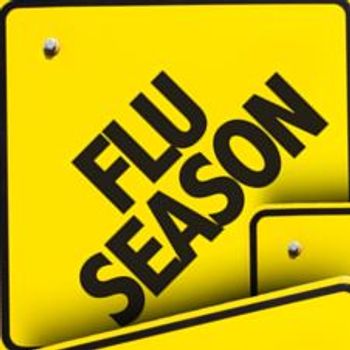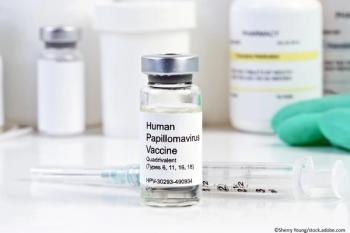
Open-Label Placebos Show Mixed Results in Migraine Prevention Trial
OLPs did not affect migraine frequency but did subjectively improve QoL, with authors noting they may have a role as a supportive treatment option for select patients.
A randomized clinical trial of 120 ]adults with episodic or chronic migraine found that open-label placebo (OLP) treatment did not reduce headache frequency but did improve quality of life and pain-related disability compared with treatment as usual. The findings were reported in JAMA Network Open.
The trial, conducted at 2 German tertiary headache centers between November 2020 and November 2022, assigned participants to receive either OLPs plus usual care or usual care alone for 3 months. Participants in the OLP group took 1 inert tablet twice daily from containers clearly labeled “placebo—contains no active medication.”
Headache frequency unchanged. The primary endpoint, monthly headache days, showed no significant between-group difference: a median of 6.0 days in the OLP group versus 7.0 in control participants during the treatment period. Monthly migraine days, pain intensity, rescue medication use, and 50% responder rates were also similar between groups.
Improved quality of life/disability scores. Despite the neutral primary outcome, secondary measures favored the OLP group. Participants reported improved physical quality of life (mean +4.25 points on the SF-12 physical component; 95% CI, 1.33-7.17; P = .01) and reduced pain-related disability (Pain Disability Index β = –5.96; 95% CI, –9.01 to –2.92; P < .001; HIT-6 β = –1.88; 95% CI, –3.28 to –0.48; P = .02). Nearly half of OLP recipients (46.6%) reported overall improvement compared with 24.2% of control group participants. Gains in physical functioning and reductions in disability persisted at the 6-mmonth follow-up visit.
The researchers reported that adverse effects (AEs) were mild and infrequent (14%). The most commonly observed AEs were transient dry mouth, vertigo, or gastrointestinal discomfort—substantially fewer than typical rates with preventive pharmacologic agents.
Why Test Placebos Openly?
Placebo responses are robust in migraine therapy. Trials of acute and preventive treatments report response rates up to 46%2 and, in some anti-CGRP studies, placebo effects may account for up to two-thirds of observed benefit.3,4 Harnessing such responses therapeutically has been limited by ethical concerns over deception. Open-label placebos—given with full disclosure that the pills are inert—seek to engage expectancy and conditioning mechanisms without misleading patients.
Prior research has shown OLPs can produce meaningful improvements in subjective symptoms, especially in chronic pain conditions.5 Evidence for migraine, however, has been limited mainly to small studies on acute attacks. The current trial represents the largest and longest OLP prevention study to date and followed current migraine-prevention trial standards.
The authors note that OLPs may influence subjective outcomes—such as pain interference, coping, and perceived well-being—more than objective clinical measures like attack frequency. They propose that improved self-observation and positive expectation could underlie these effects.
Interestingly, mean pain intensity rose slightly in both groups over time, possibly reflecting increased symptom awareness through diary keeping. The high 50% responder rates in both arms (about 26%) may indicate the strong effect of attentive usual care at specialized centers.
While the mechanisms remain uncertain, prior work suggests OLPs engage learned associations, patient-physician interaction, and ritualized treatment behavior rather than direct physiologic change. The study’s standardized video explanation and minimal clinician contact may have dampened these contextual influences, potentially underestimating effect magnitude.
Study Details
Of 120 participants (median age 34 years; 86% female), 102 had episodic and 18 had chronic migraine. Forty elected to take OLPs without concurrent preventive medication. All completed the study. The placebo tablets contained lactose monohydrate, cellulose, magnesium stearate, and microcrystalline cellulose.
Limitations
COVID-19 restrictions reduced enrollment from the planned 150, possibly limiting power to detect small effects on headache days. The open-label design precluded blinding of participants, though investigators and analysts remained unaware of group assignments. Given the nonsignificant primary endpoint, secondary results should be interpreted cautiously.
Clinical Implications
Although OLPs did not lower attack frequency, the consistent gains in quality of life and disability suggest that transparent placebo administration may enhance perceived control and coping in migraine management. The treatment was safe, inexpensive, and well tolerated.
“OLP treatment did not reduce headache frequency but was associated with improvements in quality of life and pain-related disability,” the authors concluded, adding that OLPs could be considered as a supportive option for patients seeking nonpharmacologic approaches or unable to tolerate preventive drugs.
Future research should further define which patients are most likely to benefit and how OLPs might complement evidence-based preventive therapy, they said.
References
- Jhee SS, Salazar DE, Ford NF, Fulmor IE, Sramek JJ, Cutler NR. Monitoring of acute migraine attacks: placebo response and safety data. Headache. 1998;38(1):35-38. doi:10.1046/j.1526-4610.1998.3801035.x
- Antonaci F, Chimento P, Diener HC, Sances G, Bono G. Lessons from placebo effects in migraine treatment. J Headache Pain. 2007;8(1):63-66. doi:10.1007/s10194-007-0360-4
- Forbes RB, McCarron M, Cardwell CR. Efficacy and contextual (placebo) effects of CGRP antibodies for migraine: systematic review and meta-analysis. Headache. 2020;60(8):1542-1557. doi:10.1111/head.13907
Newsletter
Enhance your clinical practice with the Patient Care newsletter, offering the latest evidence-based guidelines, diagnostic insights, and treatment strategies for primary care physicians.



























































































































































































































































































